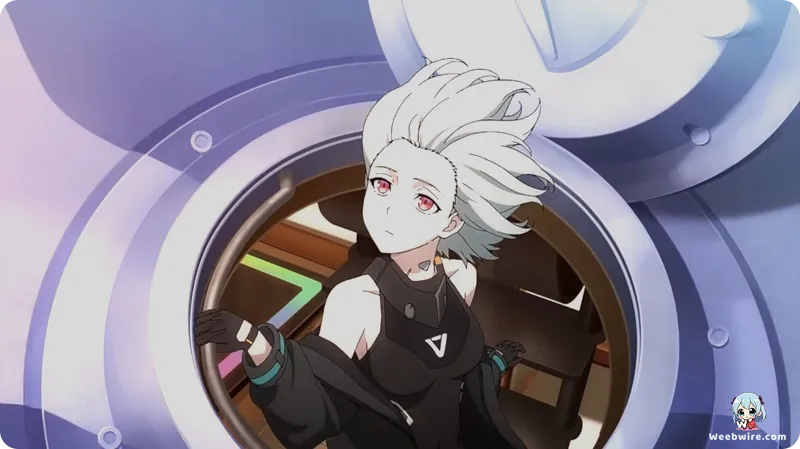Two Decades On: Unearthing the Enduring Legacy and Untold Secrets of Anime Classic 'Noir'

Two decades after its debut, Bee Train's seminal anime series, Noir, continues to hold a profound grip on audiences. It is celebrated for its intricate plotting, enigmatic characters, and a unique atmospheric quality that remains unparalleled. Beyond its renowned stylistic action sequences and compellingly dark narrative, a wealth of fascinating insights and behind-the-scenes details elevate Noir far beyond a typical action-thriller, solidifying its place as a revered cult classic and a foundational pillar of the "girls with guns" subgenre.
The Distinct Vision of Koichi Mashimo
At the core of Noir lies the distinct and influential directorial vision of Koichi Mashimo. This series is famously recognized as the inaugural chapter in what fans affectionately term the "Mashimo Trilogy," predating Madlax and El Cazador de la Bruja. Each installment, while possessing its own narrative identity, bears Mashimo's unmistakable imprint: a sharp focus on two female protagonists, often burdened by mysterious pasts, navigating a world rife with conspiracy. These narratives are punctuated by moments of intense, realistic gunplay, all underscored by a hauntingly beautiful musical score. Noir masterfully established this blueprint, showcasing Mashimo's characteristic preference for sparse dialogue during action, allowing tension and fluid movement to convey profound meaning, a stylistic choice that became synonymous with his work.
Yuki Kajiura's Revolutionary Soundtrack
Perhaps one of Noir's most enduring contributions is its breathtaking soundtrack, masterfully crafted by the prodigious Yuki Kajiura. Her work on Noir was nothing short of revolutionary, introducing a unique tapestry of classical, electronic, and Gregorian chant influences that perfectly mirrored the series' pervasive sense of mystery and often melancholic undertones. The track "Salva Nos," with its powerful Latin choral arrangements, immediately captivated fans and stands as arguably one of the most recognizable pieces of anime music from the early 2000s. Kajiura's compositions for Noir were so profoundly impactful that they not only defined the series' ambiance but also laid crucial groundwork for her subsequent iconic scores in acclaimed titles such as Madlax, Mai-HiME, and Fate/Zero. The symbiotic relationship between Mashimo's direction and Kajiura's music imbued the series with an almost operatic grandeur, ensuring that every emotional and narrative beat resonated deeply with viewers.
Symbolism in the Title and Names
The very title, Noir, is steeped in rich symbolism. French for "black," the word itself evokes traditional associations with mystery, death, and sophisticated elegance, themes that perfectly encapsulate the series' dark narrative and the secretive lives led by its protagonists. Furthermore, the names of the main characters, Mireille Bouquet and Kirika Yuumura, carry subtle, additional layers of meaning. Mireille's surname, "Bouquet," a French term for a cluster of flowers, might symbolize the inherent fragility and hidden beauty beneath her hardened exterior, or perhaps the collection of profound secrets she bears. Kirika's surname, "Yuumura," can be interpreted in Japanese as "beautiful village flower," hinting at her innocent facade concealing a deadly proficiency and a forgotten, perilous past. These linguistic nuances enrich the character development, compelling viewers to explore the depths of their identities and their pivotal roles within the unfolding conspiracy.
Bee Train's Meticulous Animation
Bee Train, the animation studio behind Noir, demonstrated exceptional prowess in animating realistic gunfights and fluid character movements. Unlike many action anime that lean on exaggerated powers or flashy special effects, Noir distinguished itself by emphasizing tactical combat and precise marksmanship. The studio's meticulous commitment to depicting the mechanical intricacies of firearms and the physical toll of combat lent a gritty, authentic realism to the series, making each confrontation feel genuinely impactful and fraught with danger. This rigorous attention to detail in action choreography set Noir apart, significantly contributing to its appeal among audiences who sought a more grounded and believable approach to animated action.

Paving the Way for "Girls with Guns"
Beyond its immediate success, Noir played a transformative role in popularizing the "girls with guns" subgenre in the early 2000s. While not the first entry of its kind, its monumental success and distinctive artistic direction ignited a wave of subsequent series that explored compelling themes of female empowerment, deep-seated sisterhood, and complex identity through the powerful lens of espionage and combat. Noir conclusively proved that female protagonists could compellingly lead action-packed narratives without relying on conventional shonen tropes, thereby paving the way for a broader and more diverse spectrum of storytelling within the anime landscape.
Thematic Opening and Ending
Even the series' opening and ending themes significantly contributed to its pervasive mystique. The opening, "Coppelia's Casket" by Akino Arai, and the ending, "Kirei na Kanjo" (Beautiful Emotions), also performed by Akino Arai, both perfectly encapsulated Noir's unique blend of beauty, profound melancholy, and an ever-present sense of impending doom. "Coppelia's Casket" evokes a chilling, haunting mystery, while "Kirei na Kanjo" offers a reflective, almost mournful conclusion, powerfully underscoring the immense emotional weight of Mireille and Kirika's arduous journey. These themes transcend mere catchy tunes; they are integral narrative components, enhancing the overall immersive experience of Noir.
Ultimately, Noir stands as a powerful testament to the creative synergy among director, composer, and animation studio. Its enduring appeal is rooted not merely in its compelling narrative or stylish action, but in its profound layers of artistic depth, from its symbolic naming conventions to its groundbreaking musical score and meticulously realistic animation. For fans seeking a masterclass in atmospheric storytelling and character-driven mystery, Noir remains a timeless recommendation, its secrets continuing to unfold with each thoughtful rewatch.
Credits
Noir
Author
Koichi Mashimo
Cover Art
Satoshi Ohsawa
Studio
Bee Train
Publisher
Victor Entertainment
Producers





